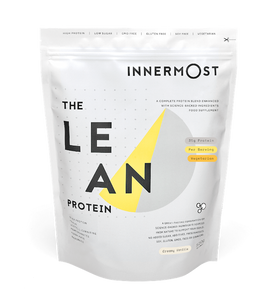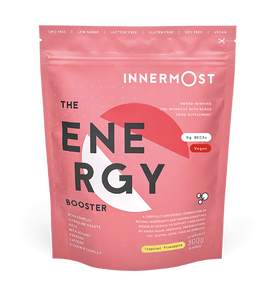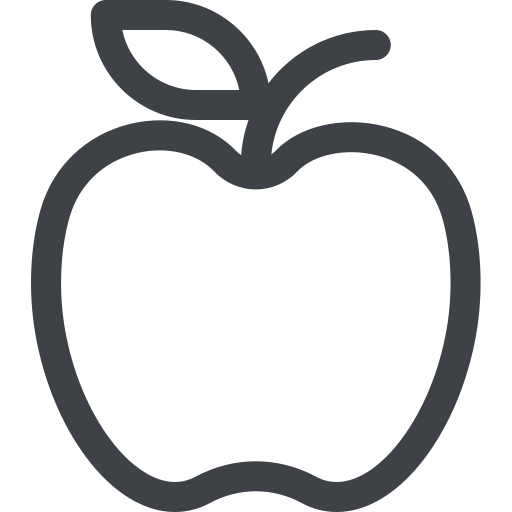Creatine supplementation is especially popular, as research states that the mineral is a great source of energy, can assist in the prevention of injury from high-intensity exercise, and also leads to an increase in muscle strength.
You may have come across creatine if you’re a competitive athlete, are a biology enthusiast, already use The Power Booster or really into your fitness. You may have also heard of this supplement due to the wealth of creatine benefits... but scientifically, what is it?
What is Creatine?
One of the most popular supplements in the athletic world, creatine is a naturally occurring mineral. Praised for its ability to provide users with quick energy bursts and improved performance, unlike many supplementations, creatine is actually naturally stored in your body and essential for cell functioning.
Let’s break down the facts and some benefits for you…
Creatine: The Science
Without going into too much complicated detail, the creatine compound is produced by the kidney and liver. This is then excreted daily into the muscles which it is then stored, ready to omit energy when we need it. This is because creatine assists the body in the creation of Adenosine Triphosphate, or more commonly known as ATP – and is an important energy-carrying molecule.
What foods contain Creatine?
Whilst we produce creatine naturally as we noted, it’s important that your creatine levels are maintained to allow healthy cell functionality. So, if you’re someone that partakes in a lot of exercise or experiences fatigue, creatine supplementation might be a good idea for you.
Luckily, it’s really easy to integrate these foods into your diet, as many of the major food groups contain good levels of creatine.
- Red Meats
This includes meats such as beef, lamb and pork. Great in meals such as a classic Spaghetti Bolognese, pork chops and more. Yum.
- Fish
Popular options include cod, salmon, haddock and prawns. Whether you add these fish sources into pasta to create a creamy carb dish or eat with rice and vegetables, this is a great way to get creatine into your diet.
- Dairy
Good news for all you cheese lovers out there! Milk, cheese and yoghurt are great sources of creatine - if you're not going dairy free, that is.
- Protein-rich Foods
Eggs, nuts and seeds, oats and broccoli are some pretty popular options and high in protein.
Whilst creatine supplementation is a great way to integrate protein into your diet, it’s worth noting that it is not a suitable alternative to protein consumption all together.
Health Benefits of Creatine
There is a huge wealth of research to back up the many creatine benefits, with notable benefits including:
- Helps Prevent Injury
Whilst creatine consumption doesn’t necessarily prevent injury, research suggests that it can lower the risk of injury by enhancing your recovery process and reducing cramping. Sounds like a pretty good creatine benefit to us!
- Increases Energy Levels
The nature of creatine means that enhanced ingestion levels mean increased ATP levels - this is the most popular reason that users opt to include creatine supplementation in their diet.
- Multiple Muscle Benefits
Creatine supplementation benefits include a number of changes within your muscles. So, not only will increased creatine ingestion help up your muscle mass, but this will enhance your muscle strength, too.
Loading Phases
Now you’ve learned the creatine basics, you may be wondering how you should integrate this supplementation into your diet. Depending on your fitness goals and your routine, this may differ slightly from person to person. This introduces us nicely to the concept of something called a Loading Phase.
What is a ‘Loading Phase’?
A loading phrase, which describes a short-term period (usually around a week) in which a user rapidly increases their creatine consumption and is usually done to obtain quick results.
This loading phase may be completed through ingestion of creatine-rich foods, or through increased usage of creatine supplements to push their bodily creatine stores to the limit. Creatine loading phases are not dangerous or unhealthy, but shouldn’t be maintained over a long-term period.
Loading phases are particularly popular with athletes or professional sportspeople, who are perhaps training for an upcoming event. An easy way to look at it: if you’re just looking to increase your energy levels for day-to-day activities, you’re probably better off avoiding the loading phase. On the other hand, if you’re looking for some fast results, this technique is definitely more geared towards you.
Are there any health risks?
Definitely not – creatine is safe and effective when taken properly.
However, it’s important that as with all food products consumed, you ensure you are paying attention to recommended quantities. Whilst there are no direct risks associated with taking creatine, if you over-indulge, so to speak, you may experience some stomach upset. The nature of creatine also increases your muscle water retention – so if your fitness goal is to lose weight, this is something to consider.
Summary
With the benefits of creatine being backed up by credible research, creatine supplementation has been proven to have great health and performance benefits – and for those reasons, we really recommend integrating this compound into your diet.
If you’re a vegetarian, vegan, or have any other dietary requirements and find it hard to naturally integrate extra creatine into your diet, Innermost’s The Power Booster is vegan, lactose and gluten free.
References
- Adenosine Triphosphate - an overview | ScienceDirect Topics. (2021). Retrieved 20 April 2021. Click here.
- Francaux, M., Poortmans, J. Effects of training and creatine supplement on muscle strength and body mass. Eur J Appl Physiol 80, 165–168 (1999). Click here.
- How The Creatine Loading Phase Brings Faster Results | Bodybuilding.com. (2021). Click here.
- Volek, J. S., & Rawson, E. S. (2004). Scientific basis and practical aspects of creatine supplementation for athletes. Nutrition, 20(7-8), 609-614. Click here.
- Volek, Jeff S.; Kraemer, William J. Creatine Supplementation, Journal of Strength and Conditioning Research: August 1996 - Volume 10 - Issue 3 - p 200-210. Click here.


















